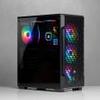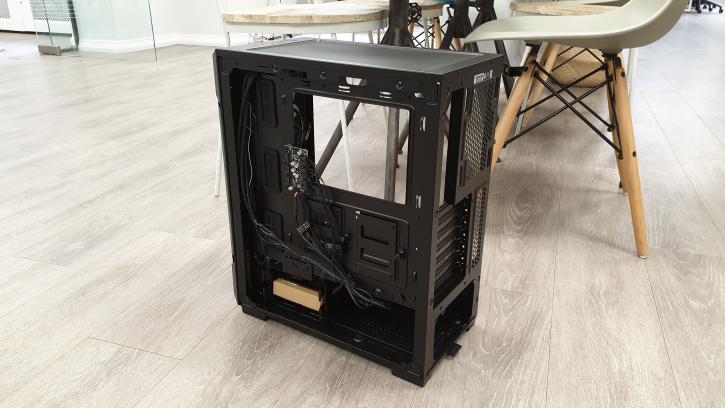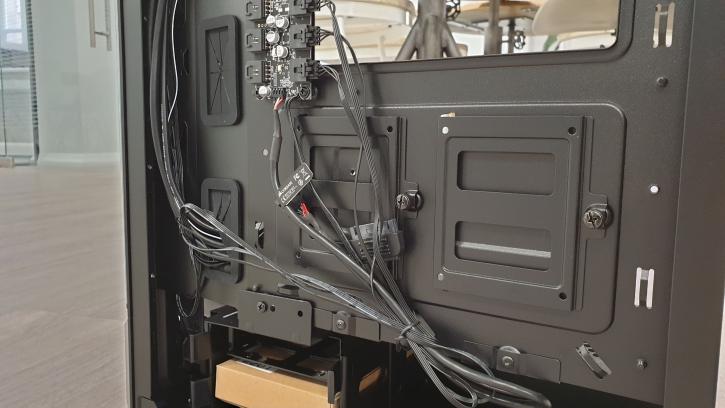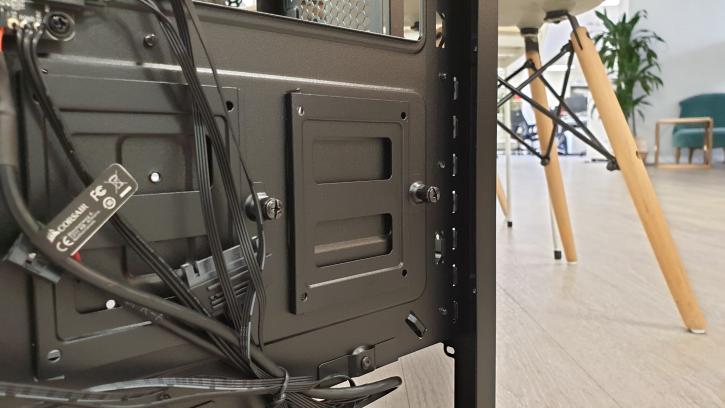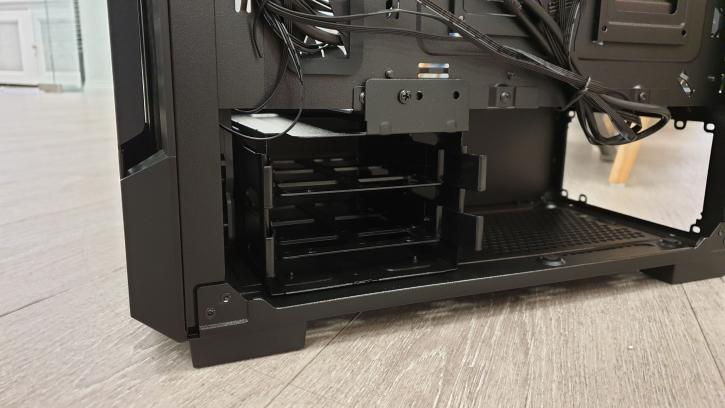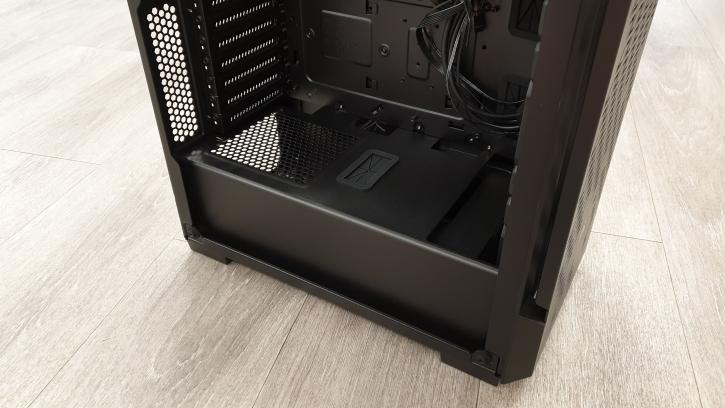Inside the chassis
Asus ROG Strix Fusion 700, RGB Gaming Headset Review - Musical/Song Testing
As always, the 220T comes packed in the same old big brown cardboard box. Well, actually... no, it doesn't. The box is still very much brown and made of cardboard, but it really isn't that big. Hint hint, people, as to what is to come with the 220T. On the front, we get some artwork of the case itself, and some basic tech specs printed elsewhere on the case. It really is business as usual, here, and I think we can safely move on.
The case is, as per usual, protected by two rather fat polystyrene blocks, and is loosely wrapped in a thick(ish) plastic sheet. The case easily survived a trip home on London's District Line, so I don't suspect out of the box damage will ever be a problem. Now... about that whole 'size' thing. This case is small, and I do not say this lightly. Despite having seen the physical dimensions of this chassis printed on the box and in the pre-release press material, actually viewing it first-hand was a genuine shock. I do, however, mean that in a good way. The 220T is still, very much, a mid-tower case with 7x PCIe slots. It just also happens to be so diminutive that one could easily, easily mistake the case for an mATX case, or even a relatively large ITX chassis. Due to all of these, please take heed of the basic advice on the previous page of this review. Smart component choice, budgets, use cases, etc. These are all factors that you have to account for when choosing your case. If you stick a heavily overclocked 9900k and 2080Ti into this case without adequate planning, then... well, you're a bit of a plank, and deserve all the overheating woes you may well run into.
What about looks? Well, these are highly subjective, as we know, but they still deserve a mention. Personally, I think this case looks absolutely fantastic. I really, really like the design of the front panel. Some may hate it, some may love it. That's design for you. In case you are wondering, behind this front panel is a fine mesh that is easily removed.
The tempered glass is held in place by four thumb tightened screws... that don't - mercifully - require any kind of hex wrench to release. Those of you who read my 275R review will know that despite my strong affinity for that case, the screws that held in the tempered glass side were perhaps my most hated feature of the case. They are entirely absent here, and that is great. The glass itself is, I would say, 'semi-captured' by the screw posts, aka. it is not directly held into place by anything other than gravity, but the posts are recessed enough that the glass is extremely unlikely to fall off. Still, this is not something I would readily test.
The 220T comes with the aforementioned 3x SP120 RGB fans. I have zero doubts that they will do their job, and they will probably do it fairly well, as the 'SP' range of Corsair fans are relatively standard pressure optimised ones that focus on the ability to pull air at higher pressures through tight gaps, rather than pushing/pulling a sheer overall volume of air. If it were me, however, I would probably remove the bottom-most fan and use it as a rear-mounted exhaust? I don't like the idea of running a case with no exhaust at all and relying solely on passive exhaust via positive air pressure (i.e. volume of air going 'in' > volume of air going 'out').
Rolling around to the blank 'other' side of the case, it's... well, kinda' dull. I mean this is like 99.5% of cases on the market, so no complaints at all. Here we see the 2x HDD tool-less drive bays, 2x SSD 2.5'' bays (in their now relatively traditional place on Corsair chassis', i.e. behind the MB tray), and pre-installed Lighting Node Pro controller, to which the three front fans are already hooked up. Thank you, Corsair, less work for me.
There is, I should note, relatively limited space behind the motherboard tray (and back panel in general) for a lot of cables. Having not yet built in the case at this point in the view, I cannot comment decisively on this point. I would suspect, however, that having a modular/semi-modular PSU and being 'smart' with your choice of components will keep cable management woes at bay. That said, I really cannot fault the 220T for having limited space as it is a small chassis from the outset.
The 220T also features the now industry-standard PSU basement. This is not removable, which is a slight shame, but I will forgive the 220T this minor transgression. It does, however, feature something that I find to be absolutely essential in modern-day PC building. That is, of course, a PCIe cable cut-out/grommet. Cases without these force the end-user to route GPU power cabling via the back panel, which annoys me intensely.
Finally, what about build quality? I mentioned before that the 220T's 'dry' weight was pretty decent, considering its size. I soon discovered, however, that the 220T's exceptionally well-crafted front panel was a major source of this weight. That does not mean to say, however, that the case is badly built. Far from it, actually. Whilst the metal isn't yards thick, it is entirely adequate and what I would come to expect from a case of this price point. I would certainly argue that the 220T's overall build quality is less than, say, the Define C/Meshify C from Fractal Design, but they don't come with lighting node controllers and/or RGB premium series fans. It is, therefore, somewhat tit for tat. In the next section of the review, I will take you through my process of (re)building my current PC inside the 220T.
